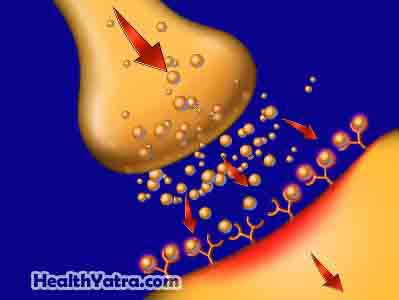Definition
Opioids are a class of drugs made from opium, as well as synthetic or semi-synthetic drugs that resemble these opium-based drugs. Many opioids are available by prescription. Examples include oxycodone, codeine, morphine, and fentanyl. Heroin is one of these drugs that is illegal. These drugs are often referred to as narcotics.
Addiction is marked by an out-of-control need and craving that affects relationships and social obligations, such as work and school. Some medications have a higher risk of addiction. Even with proper use they are associated with alterations in the pathways in the brain. These pathways influence sense of reward and well-being which can influence addiction.
Opioid abuse is inappropriate use of opiods. It may include snorting pills, mixing with other drugs and alcohol, or using them for the wrong reasons (such as using pain medication for sleep). Opioid abuse may only develop because of addiction or the addiction may develop after abuse of an opioid.
Causes
Opioids produce a quick, intense feeling of pleasure (euphoria), followed by a sense of well-being and calm drowsiness. When opioids are used repeatedly, your brain is likely to become dependent on them. Opioids are highly addictive.
Other factors that may play a role in opioid addiction include:
- Genetic factors
- Altered pathways in brain caused by the addictive drug
- Peer pressure and personality traits

Risk Factors
Factors that may increase your chance of opioid addiction include:
- Being under 30 years old (risk of addiction decreases as age increases)
- Being a man
- Improper use of medication (abuse)
- Family history of drug addiction
- Having anxiety, depression, loneliness, and a history of alcoholism
Physical dependence may contribute to the development and continuance of addiction. Physical dependence is when your body needs a drug to function normally. Withdrawal symptoms when the medicine is stopped or reduced can be a sign of physical dependence. Withdrawal symptoms can be intense and include nausea, vomiting, and sweating. It can make cessation of drug use difficult. Physical dependence may occur with abuse or with long term proper use of medications.
Symptoms
Symptoms of opioid addiction may include:
- Rapid increase in the amount of medication needed
- Moving from one doctor to another for additional prescriptions
- Craving the medication
- Inability to stop or limit medication use
- Using significant effort to acquire the medication
- Medication use that interferes with activities
- Compulsive use of the medication despite adverse effects
Diagnosis
Addiction can be difficult to diagnose. Prescription opioid addiction can start with someone who needs frequent pain medications for a long-term condition. This can make it difficult to distinguish the difference between addiction and medical need.
Your doctor will ask about your symptoms, your medical history, and use of opioids. A physical exam will be done.
Treatment
Talk with your doctor about the best treatment plan for you. Treatment options include:
Rehabilitation Programs
Rehabilitation programs can be inpatient or outpatient. Inpatient rehab involves staying in a controlled environment for a several weeks or up to one year, depending on nature of addiction and factors that contribute to the addiction. Before going home, some inpatients reside at half-way houses where they can slowly regain their independence. Outpatient rehab can also last up to a year, but you can live at home. Outpatients make frequent visits to clinics for treatment.
Components of both rehab involve:
- Detoxification and controlled withdrawal with medication
- Treatment for other psychological conditions
- Counseling and support
Support Groups
Narcotics Anonymous is a twelve-step program that help support people who are recovering from addiction to opioid drugs.
Behavioral Therapy
Behavioral therapy is designed to modify people’s attitudes and behaviors related to opioid abuse. In therapy, you will learn how to avoid and cope with situations in which you are most likely to use drugs, and avoid situations that may cause relapse. Therapy sessions may include individual, group, or family counseling.
Medications
Certain medications can be used to treat opioid dependence and addiction. They may be used during detoxification to reduce withdrawal symptoms. They may also be continued through maintenance to decrease craving and reduce the risk of relapse. They are given as a part of an overall treatment approach including counseling. Common medication options include:
- Methadone
- Buprenorphine
- Naltrexone
- Buprenorphine/naloxone (Suboxone)
The choice of medication will depend on drugs involved in addiction, your medical history, and recovery commitment.
Other medications may be needed to treat underlying issues, such as depression or anxiety. These medications may help you on your way to a full and productive life as well as prevent relapse.
Prevention
The best way to prevent this condition is to never use opioids. They can be highly addictive. If you do have to take prescription drugs to treat pain, follow the directions closely and use them for the shortest amount of time needed.
